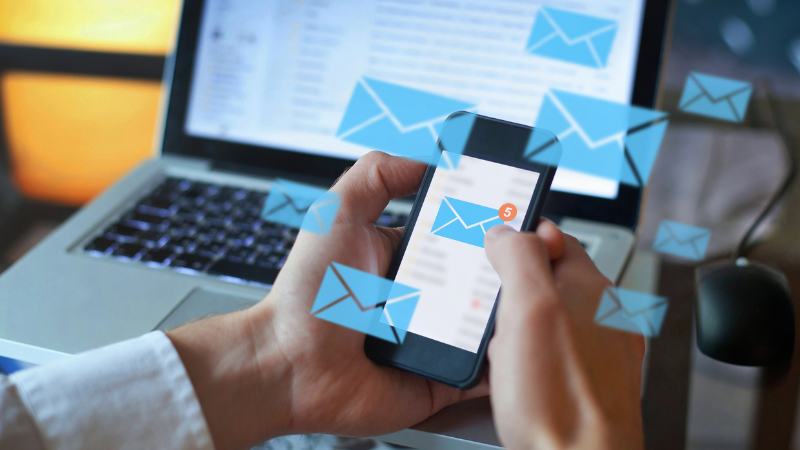Email Security for SMBs
Think about all the emails you sent and received last week. How many of them contained confidential business data? Now, what would happen if that data ended up in the hands of a cybercriminal? We’ll answer that for you – devastation, loss of customers, loss of money, reputational damage, and maybe even business foreclosure.
According to Mimecast’s “The State of Emal Security” for 2023, the average cost in the U.S. is $9.44 million. On average, it takes 212 days to detect a data breach and another 75 days to contain it.
That is why email security for small-medium-sized businesses needs to be taken seriously. SMBs are targeted with the same attacks that large organizations are hit with. As long as a hacker can make money off of selling the information they get, it doesn’t matter what size business they attack.
Email security is essential for protecting confidential information for SMBs. Prevent your company from being a victim of cybercrime with these email security tips.
Data breaches often happen because of human error and poor credential management. The most common way SMBs are targeted is with Phishing Scams. You also don’t want to give cybercriminals an open door to your inbox. Gaining access to your email account directly causes a host of other issues. Educating your employees and keeping your network safe is essential to protecting your business.
Email gives us essential communication at our fingertips. But it can give cybercriminals an effective way to bring down your company. Just one malicious email in an employee’s mailbox can lead to catastrophic consequences. The overall goal is to make it challenging for hackers to access your communication in order to reduce your risk of security breaches.

Essential Email Security Tips
1. Educate Employees
Education is the best way to protect your business from the inside out. Create email security policies within your company for not sharing sensitive information over email and only providing your email to those necessary. Also, instruct them to be careful where they sign in to their email accounts. If they are connected to an unsecured server, hackers can access their email accounts and send potentially harmful emails to clients asking for their confidential information. Make sure employees know how to recognize a Phishing Scam, and encourage them to delete unnecessary emails from their inboxes every 90 days.
2. Read Emails Carefully
Phishing Scams can be sent to lower-level employees to be exploited as a weak link in the email security chain, but they can also be sent to higher-up management as well. Make sure everyone reviews each email they receive carefully for misspellings, unnecessary urgency, and anything else that looks out of place. Email spoofing can trick anyone in the company from making that fatal click. If you do suspect a scam email, delete it and change your password immediately.
3. Use Two-Factor Authentication
2FA highly decreases your risk of someone accessing your account directly. Chances are slim that they know your email password and have your smartphone in order to confirm a secondary code. Having this set up on everyone’s email accounts can go a long way in protecting unauthorized access to company inboxes.
This has been said many many times but it can’t be stressed enough. People often choose passwords with words and numbers that are important to them, which makes them easier to remember but also easier to hack. Using long passwords with combinations of uppercase and lowercase letters, numbers, and symbols will decrease the odds of a hacker guessing your password. They don’t just have to guess, by the way, cybercriminals have evolved to using AI programs that consider hundreds of possibilities for passwords. Passkeys are a great way to secure your email account and you can use password managers to keep track of them. Never use the same password twice, make sure your passwords are at least 12 characters long and don’t use the same password across multiple accounts.
5. Increase Spam Filters
Almost all email providers offer spam filters. Make sure company email accounts are set to the highest level to eliminate the chances of Phishing Scams getting into inboxes. Avoiding spam emails saves time and reduces your company’s risk of exploitation.
6. Update Antivirus Protection
Even if a Phishing Scam seems legit in every other way, it could still include attachments that are actually a virus or malware to be downloaded onto your computer. Having antivirus protection on your office computers helps scan all attachments in emails for viruses. This can save you a lot of time and trouble.
Encrypting your emails ensures that anyone who does intercept your communication can’t read them. Encryptions encode your emails into unreadable text. Then, decodes them for the person it was meant to be sent to. Some providers, like Microsoft 365, automatically encrypt emails but not all email providers do.
Want to learn more? Let’s talk. Contact our team at 843-236-6436.
Ready for IT that WORKS for your business?

- Managed IT Services
- Business Phone Systems
- Managed Print
- Cybersecurity
- Cloud Services
- Data Cabling
Schedule a 15-minute meeting with our team.
